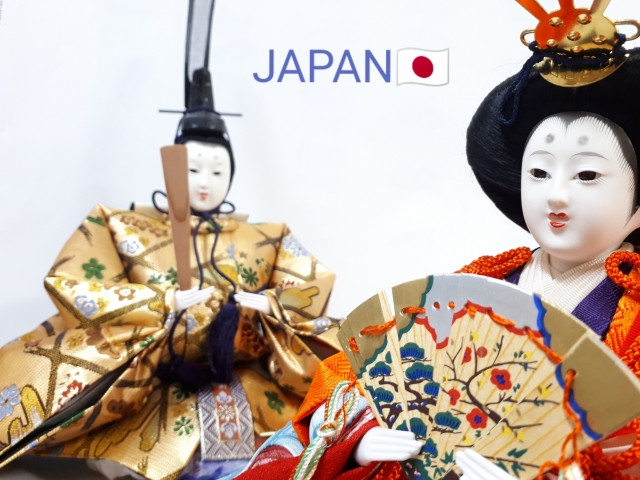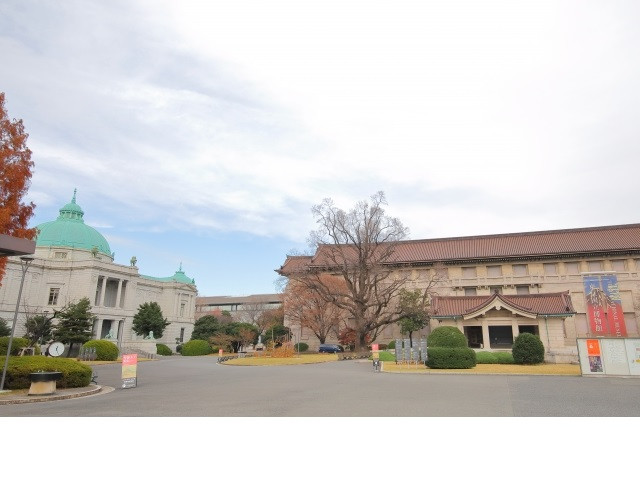Swords used by the ancient samurai, armor of warlords, and other artifacts are preserved for the world to see in the Tokyo National Museum. Experience the history of ages past in Japan - this is but a small preface to the place that holds centuries worth of Japanese history.
Things to know about the Museum
History of Tokyo National Museum
The Tokyo National Museum (Tōkyō Kokuritsu Hakubutsukan) was established in 1872, making it the oldest national Museum in Japan. It was originally located near Kanda Station, but was relocated to Ueno Park soon after and it has been there since.
Buildings in the Complex
The Museum is comprised of six separate buildings, each specializing in different kinds of art and exhibitions.

Honkan, the main building, designed by architect Watanabe Jin, was opened in 1938. Its distinctive style, called “Imperial Crown,” combines Japan’s gabled roof style into the western’s neo-classical base. The first floor of the two-story building groups the displays according to the genre. In contrast, the second floor illustrates the history of Japanese art in sequential order from the earliest historical era of the Jomon Period to the Edo Period.
Adjacent to Honkan to the left is the Hyokeikan, the Western-style architecture from the Meiji Period being its distinctive feature. It was built to commemorate the wedding of the crown prince Taisho who later on became the Emperor. Built in 1909, the Hyokeikan is the oldest building of the six. Its primary use is to hold special exhibitions; thus, regular days remain closed.
The Heiseikan, which stands behind the Honkan building, was built to celebrate the Crown Prince Naruhito’s wedding in 1993. He is now the current Emperor of Japan. The Heiseikan opened in 1999, showcasing the Japanese Archeological Gallery on its ground floor, while the upper level holds several special exhibitions.
Toyokan, also known as the Asian Gallery, houses a collection of Asian art & artifacts from all of Asia and Egypt. The clever design by the Japanese Architect Taniguchi Yoshiro utilizes all the space from the basement to the top floor to display the artifacts.
The Gallery of Horyuji Treasure or Horyuji Homotsukan, the museum’s newest building opened in 1999, was designed by architect Taniguchi Yoshio, whose father designed the Toyokan. The two-story, minimalistic building is home to the collection of relics from Horyuji Temple in Nara.
The sixth exhibition building, the Kuroda Memorial Hall, is located a little distance away compared to the other buildings. Designed by Okada Shinichiro, the European styled building was erected to show and commemorate the works of painter Kuroda Seiki, a leading figure in modern Western-style painting in Japan.
Writer's Pick
What the Museum offers

Change is inevitable, especially in a fast-developing country, like Japan. A few years from now, variations from this ‘present’ will become the future’s past. That is why museums play a vital role as it preserves the items, the history, and the culture- allowing them to be remembered in the future.
Tokyo National Museum is more so relevant in connecting the present to the past. It has documented art from prehistoric age up to the present, giving people a glimpse of what the past has offered. The Museum not only educates people of Japanese culture but documents how civilization changes; how it evolves from one period of time to another.
National Treasures, Traditional and Ancient Japanese Art, Artifacts
The Tokyo National Museum boasts its large collection of art and artifacts: from Japanese Paleolithic stone tools of 30,000+ years which is the earliest known in the world; 19th century Buddha Statues; National Treasures dated before the 1st Century, special exhibitions like ‘China: Grandeur of the Dynasties’ which includes statues from the Terracotta Army; and so much more.
Samurai Swords, Armor, and Katanas
The country is known for its samurai swords, and the museum holds several on display in its Japanese Sword section. It includes the dagger “Ōhōshō” from the Kamakura period of the 13th Century; and the Katana “Kanze Masamune,” a long sword, which is a national treasure from the 14th Century.
Samurai warrior armor in the Edo period, which is from the 16th to 17th Century, featuring intricate woven designs and striking laces, are also displayed.
Other Things to do

Other attractions aside from the six structures are present at the museum’s complex. At the back of the main building is a Japanese garden where a pond is situated; moreover, five historic tea houses which, in some days, can be booked for tea ceremonies and other special events. There is also a bronze pagoda in the garden, which is about 570 cm tall, aging almost 400 years old.
You can also gaze upon the outdoor exhibits ranging from different stone statues, stone lions, repository, residential roofs from the Edo Era, and the Kuromon (or the “Black Gate”), an impressive gate from a particular clan which dates from the early 19th Century.
The Research & Information Center, which holds a massive library of books, magazines, and photographs, is readily available to view without an appointment. It has references to items located in the Museum, consequently, provides photocopying services at the center’s counter.
If you ever feel hungry, there are two restaurants on the museum grounds. There is also a gift shop that you could buy presents and souvenirs from.
Tips to Enjoy the Trip

You should allow a day or two if you want to explore and experience Tokyo National Museum fully. As there are six buildings in total, not to mention outdoor exhibits and activities to enjoy half a day is too short to immerse yourself in what the Museum has to offer fully.
If time is of constraint, you can check online on what to expect so that you could plan your trip accordingly. You can also find package tours that suit your needs.
Hiring a tour guide is optional. Keep in mind that the museum supplies brochures (written in seven languages: English, Chinese, Korean, French, German, Spanish, and Japanese), which includes a map, plus a guide around the complex. Did you also know that descriptions are also written in English? Some information is also translated in Korean and Chinese.
Summary
If you are planning a trip to Japan, be sure to visit Tokyo National Museum. It is capable of introducing the country in a way you would have never experienced. Be amazed by the buildings’ architecture, get involved with Japan’s past and culture, and be captivated by its art and treasures. It is truly a wonderful experience!



















.jpg)











